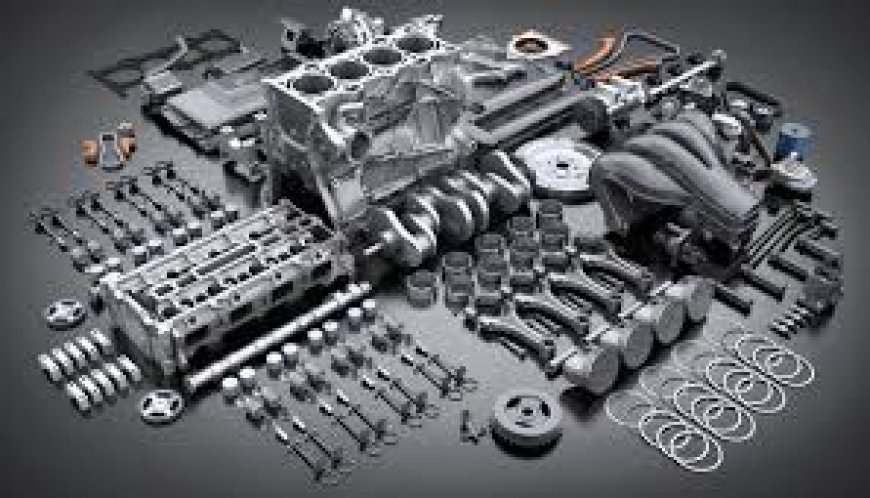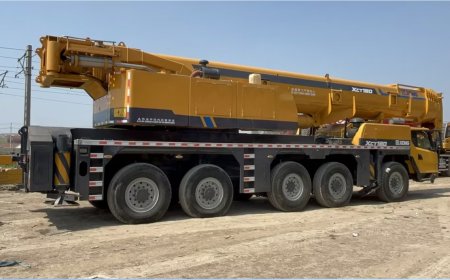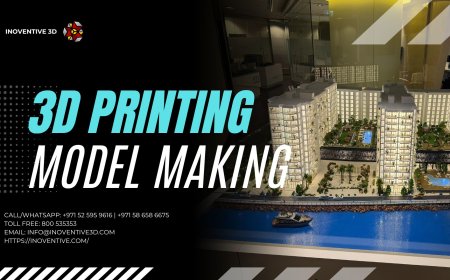The Evolution of Engines: From Carburetors to Hybrids
Explore the evolution of engines from early carburetors to today’s hybrid systems, tracing the milestones that revolutionized modern automotive engineering.

Engines are the beating hearts of vehiclesresponsible for turning chemical energy into mechanical power and driving innovation in the transportation world. Over the past century, engine technology has evolved tremendously, from simple carburetor-fed systems to the sophisticated hybrid and electric drivetrains of today. This transformation reflects changes in engineering, environmental awareness, and consumer expectations. Lets take a comprehensive look at how engines have evolvedcharting a course from their humble mechanical beginnings to todays cutting-edge hybrid technology.
1. The Birth of the Internal Combustion Engine
Before automobiles dominated the roads, steam engines ruled the transport sector. However, their bulky structure and long start-up times created the need for a more efficient solution.
The internal combustion engine (ICE), first developed in the late 19th century, provided a compact and more practical alternative. Early pioneers like Nikolaus Otto (four-stroke engine), Karl Benz, and Rudolf Diesel laid the groundwork for what would become the backbone of the global auto industry.
2. Carbureted Engines: The First Wave
What Is a Carburetor?
The carburetor is a mechanical device that mixes air and fuel before it enters the combustion chamber. It was the standard fuel delivery system for cars throughout the early 20th century.
Advantages of Carbureted Engines
-
Simple construction and low cost
-
Easy to repair and maintain
-
Compatible with older vehicles and classic models
Limitations
-
Poor fuel efficiency
-
Difficulty in maintaining the ideal air-fuel ratio
-
Higher emissions due to incomplete combustion
Carbureted engines were functional and served millions of vehicles reliably. However, they lacked precisionespecially in adapting to changing driving conditions, altitudes, and loads.
3. Fuel Injection: A Game Changer
Enter the Electronic Age
By the late 1970s and early 1980s, manufacturers began replacing carburetors with fuel injection systems. These systems, controlled electronically, inject fuel directly into the combustion chamber or intake manifold.
Benefits of Fuel Injection
-
Greater fuel efficiency
-
Improved power output
-
Lower emissions
-
Enhanced drivability and performance
Electronic Fuel Injection (EFI) became standard by the 1990s, largely due to increasing emissions regulations and the desire for better performance. It marked the transition from mechanical to electronic engine management.
4. Engine Management Systems and ECU
Rise of the Computer-Controlled Engine
The integration of Engine Control Units (ECUs) brought in a new era of intelligence to engines. These onboard computers monitor various sensors (oxygen, throttle position, temperature) and optimize fuel delivery, ignition timing, and more.
Why This Matters
-
Real-time adjustments based on conditions
-
Diagnostic capabilities (OBD systems)
-
Compliance with strict emissions norms
-
Better performance and fuel economy
Modern engines rely heavily on electronics, making them smarter and more adaptable than their mechanical predecessors.
5. The Turbocharging Revolution
Turbochargers, though invented in the early 20th century, gained mass-market adoption in the 2000s. By compressing incoming air, they allow more oxygen into the combustion chamber, boosting power without increasing engine size.
Turbocharged Engines Offer:
-
More horsepower from smaller engines
-
Better fuel efficiency (downsizing)
-
Reduced emissions when paired with direct injection
Many manufacturers shifted to turbocharged four-cylinder engines to replace naturally aspirated six- or eight-cylinder models, especially after the 2008 fuel crisis and growing environmental concerns.
6. Variable Valve Timing and Cylinder Deactivation
Engine efficiency saw another leap with technologies like:
a. Variable Valve Timing (VVT)
Adjusts the timing of the intake and exhaust valves based on engine speed and load. Examples include:
-
VTEC (Honda)
-
VVT-i (Toyota)
-
VANOS (BMW)
Benefits:
-
Improved fuel economy
-
Enhanced performance across RPM ranges
b. Cylinder Deactivation
Turns off cylinders when full power isn't needed (e.g., cruising), helping save fuel. This is especially common in larger engines like V6s and V8s.
7. Emergence of Hybrid Engines
Bridging the Gap Between ICE and Electric
Hybrid engines combine a traditional gasoline engine with an electric motor and battery pack. They gained traction in the early 2000s with the launch of the Toyota Prius and Honda Insight.
How Hybrids Work
-
The electric motor assists during acceleration and low speeds
-
Regenerative braking charges the battery
-
The ICE kicks in when more power is required
Types of Hybrids
-
Mild Hybrids: Electric motor assists but cannot power the car alone
-
Full Hybrids: Can operate on electric power alone for short distances
-
Plug-in Hybrids (PHEVs): Recharge via external power and offer longer electric range
Benefits of Hybrids
-
Excellent fuel economy
-
Lower emissions
-
Quieter and smoother operation
Hybrids paved the way for a more sustainable future while allowing drivers to retain familiar ICE functionality.
8. Advances in Engine Materials and Design
Apart from core combustion technology, engines have improved in other ways:
-
Lightweight materials (aluminum, composites) reduce weight
-
Precision machining allows tighter tolerances
-
Forced induction and direct injection improve performance
Modern engines are more compact, powerful, and efficient than ever beforethanks to advances in metallurgy, thermodynamics, and computer modeling.
9. Emissions Standards Driving Innovation
Government regulations worldwide have significantly influenced engine evolution. Policies like:
-
Euro Emission Standards (Europe)
-
CAFE (Corporate Average Fuel Economy) Standards in the U.S.
-
China VI Emissions Standards
have forced manufacturers to create cleaner engines.
Key technologies developed in response:
-
Catalytic converters
-
Exhaust Gas Recirculation (EGR)
-
Diesel Particulate Filters (DPFs)
-
Selective Catalytic Reduction (SCR) with AdBlue
These helped reduce pollutants like NOx, CO2, and unburned hydrocarbons.
10. Internal Combustions Future: Cleaner, Smaller, Smarter
While full electrification is on the horizon, ICEs arent disappearing overnight. Modern engines are adapting with:
-
Mild hybrid systems
-
48V electrical systems
-
E-turbos (electric turbochargers)
-
Alternative fuels (ethanol, CNG, hydrogen ICEs)
Manufacturers like Mazda are developing compression ignition gasoline engines (SkyActiv-X) that combine diesel-like efficiency with gasoline smoothness.
11. The Road Ahead: From Hybrids to Full Electrification
As global demand for sustainability grows, the focus shifts toward Battery Electric Vehicles (BEVs) and Hydrogen Fuel Cell Vehicles (FCEVs).
Still, hybrids remain an essential transition technologyoffering:
-
Familiarity for consumers
-
Infrastructure flexibility
-
Lower ownership costs than full EVs (in many markets)
The engine, as we know it, is transformingbut its legacy and ongoing innovations continue to shape the mobility landscape.
Final Thoughts
From the early carburetor systems to the advanced hybrid drivetrains of today, the evolution of engines is a testament to human ingenuity, driven by necessity, innovation, and environmental awareness. Each phasebe it fuel injection, turbocharging, or hybrid integrationhas brought improvements in power, efficiency, and emissions control.
As we accelerate into a future of electrification and AI-driven mobility, it's important to appreciate the long journey engines have taken. Their evolution reflects not just engineering milestones, but also the changing needs of societyand they continue to play a key role in shaping the vehicles of tomorrow.


































